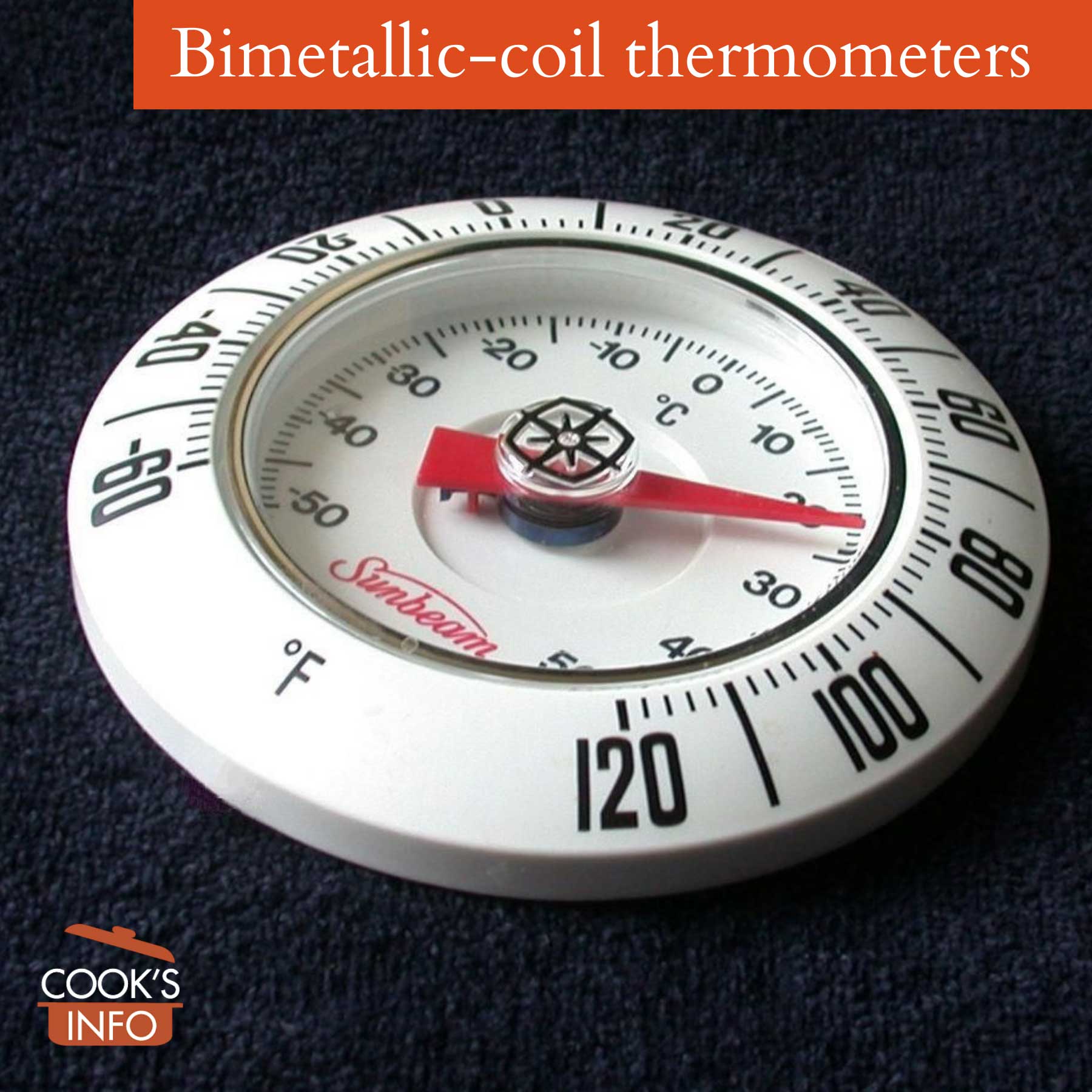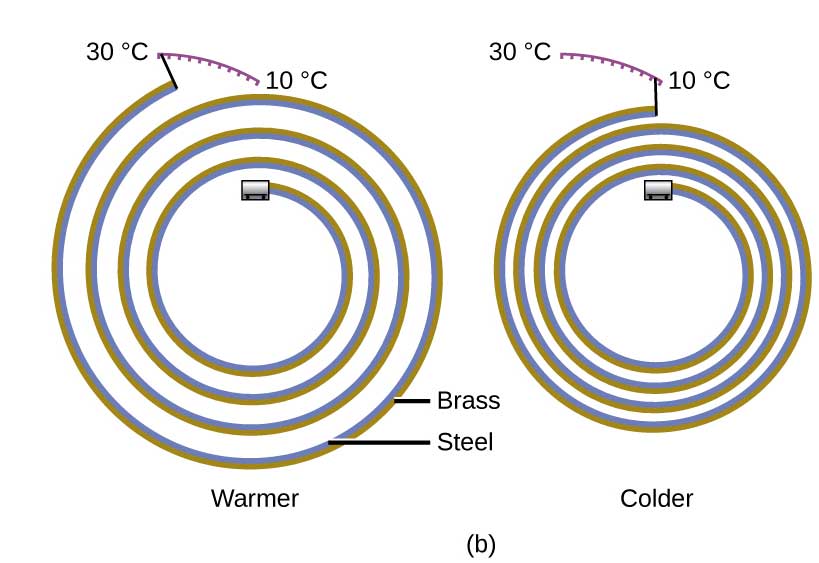
Bimetallic coil thermometer. Greg Goebel / pixnio.com / Public Domain
Bimetallic-coil thermometer is a term describing the mechanism of how a certain design of thermometer works.
These thermometers have in them a coil that is between 5 to 6 cm long (2 to 2 ½ inches). The coil is made of two different metals, which expand at different rates.
This causes the coil to expand as well, thus moving a dial.

Bimetallic-coil thermometer design. OpenStax / wikimedia / 2016 / CC BY 4.0
This design is often used for such things as meat thermometers, both oven-safe ones and instant read ones.
With a bimetallic meat thermometer, the temperature read inside the meat will be an average of the temperatures detected from the tip of the inserted thermometer up to about 6 cm (2 ½ inches) along the shaft of the thermometer. For this reason, the shaft of a bimetallic meat thermometer should be inserted into the meat at least about 7 to 8 cm (3 inches) to ensure that an accurate reading is being taken. Some makes will have a dimple on their shafts, indicating how deep the shafts should be inserted.
“The bi-metallic stemmed thermometer is the most common type of foodservice thermometer. It measures temperature through a metal stem with a sensor in the lower end. The sensing area is from the tip to a half-inch past the dimple. The temperature is read on the dial face. When selecting this type, look for an adjustable calibration nut, easy-to-read temperature markings, and a dimple marking the end of the sensing area” [1]MacNeill, Sally. Foodservice Thermometers: Types and how to use them. North Carolina Cooperative Extension Service, Mecklenburg County. November 1998. Page 1.
Sources
What is a bimetallic coil thermometer? USDA. 17 July 2019. Retrieved November 2020 from https://ask.usda.gov/s/article/What-is-a-bimetallic-coil-thermometer
How does a bimetallic strip thermometer work? Tec science. 5 March 2019. Accessed November 2020 at https://www.tec-science.com/thermodynamics/temperature/how-does-a-bimetallic-strip-thermometer-work/
References
| ↑1 | MacNeill, Sally. Foodservice Thermometers: Types and how to use them. North Carolina Cooperative Extension Service, Mecklenburg County. November 1998. Page 1. |
|---|

